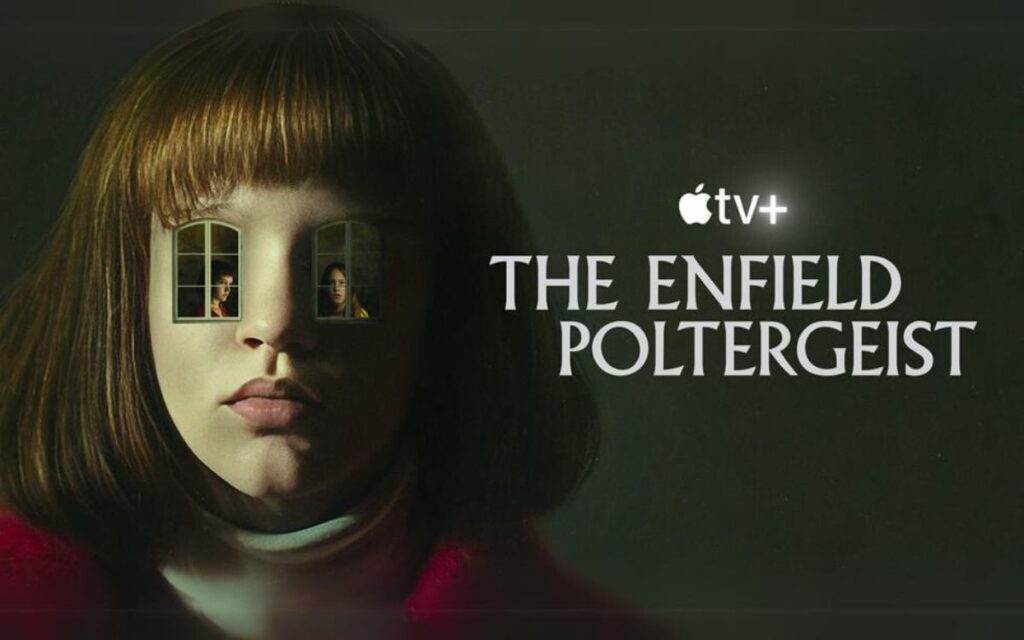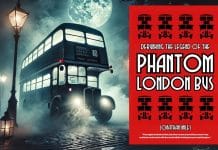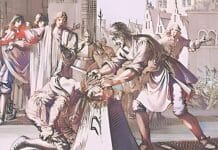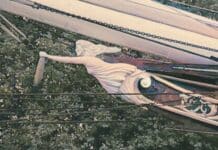Apple TV+’s new Enfield Poltergeist series presents a unique and compelling view of Maurice Grosse’s legendary research, though the filmmaker’s selective re-enactments could be misleading, writes ANDY MERCER

The paranormal events that occurred in a small semi-detached house in Enfield, London, are probably the most famous example of supposed poltergeist activity in the world and certainly the most intricately documented.
Lead investigator Maurice Grosse recorded copious notes and more than 200 hours of audio, documenting many of the paranormal events “as they happened”.
The poltergeist activity in Green Street, Enfield, began reasonably innocuously, with some odd banging emanating from the walls. However, the events quickly escalated into objects being thrown around and furniture moving.
Looking for help and an explanation, the Hodgson family (Mum Peggy, daughters Margaret and Janet, and son Billy) reached out to the police and local council for help, and from there, news of the events spread into the media, with both newspapers and TV news getting involved.
It was at this point that Maurice Grosse, a member of the Society of Psychical Research, became involved.
Unique Treatment of The Enfield Poltergeist Case
There have been attempts in the past to dramatise the events in Enfield, ranging from the seemingly reasonably faithful to the ludicrously distorted and fantastical (I’ll leave the reader to determine which versions I’m referring to).
But the Apple TV+ docudrama is unique in the sense that it’s the first time Grosse’s notes and recordings have played a direct part in not just creating the programme but having actors actually lip-sync Grosse’s recordings.
The series uses actors who, in most cases, bear a remarkable resemblance to the people they are representing, in particular Peggy Nottingham, cousin of Margret Hodgson, and, of all people, Ed and especially Lorraine Warren, who briefly show up. Unfortunately, not so much the actor lip-syncing Grosse himself.
As with any docudrama, The Enfield Poltergeist mixes interviews with the witnesses of the actual events with dramatic reconstructions of the events. The programme starts with the set builders accurately reconstructing the internal layout of the Enfield house before beginning to introduce those involved and document the events.
The mini-series consists of four episodes. The first three chronologically document the events, with the final episode focusing more on Grosse’s own life and motivations, as well as interviews with Janet Hodgson, the apparent focus of the events.
This is interjected with the views of members of SPR, who appeared to be more sceptical of the events than Grosse and his eventual investigatory partner, Guy Lyon Playfair.
Nevertheless, the programme presents the recorded and reconstructed events relatively uncritically.
However, we, as the audience, can only judge this on the evidence that the programme makers chose to reconstruct, which can only be about five percent of the total recorded. But they did include the most famous elements, including the eyewitness testimony from the police officer who witnessed the chair levitate and move (both the original interview and the reconstruction).
Enfield Haunting Flying Out of Bed Scene
The famous ‘Flying out of bed’ series of photos was presented uncritically, without an opinion or explanation being offered, apart from Grosse’s himself.
The actual photographer merely explained how the equipment worked. The makers didn’t attempt to reconstruct the ‘flight’; they merely showed the photos together, as taken, at speed and in sequence, giving the impression of Janet moving through the air unaided.
The production team also included reconstructions of other lesser-known events, including the many examples of objects moving in front of more than just Grosse, including news reporters, photographers, and other members of the SPR who visited the house.
The main element of the case that the later episodes focus on is the initially mysterious ‘voice’ that, at first, seems to emanate from the building itself, then from Janet directly. (Although ‘Bill’ briefly features in the opening scene.) Interestingly, this additional phenomenon turned the case into more of a ‘classic haunting’ rather than a traditional poltergeist manifestation, something Grosse himself comments on.
Bill is certainly the most controversial element of the case, with the programme not focusing on any particular explanation as to the origins of the voice, be it a voice speaking through Janet or simply a creation of Janet herself. Although it’s clear what members of the PSI and others thought, including the ‘believer turned ardent sceptic’ Dr Sue Blackmore, who appears to be playing ‘the voice of reason’ role in the programme.
However, the Blackmore interview material that the producers chose to use seemed to focus more on her views of the paranormal generally and less on the actual events.
As I mentioned earlier, the first three episodes focused on the events, while the last focused more on Maurice Grosse’s personal life than the case, making it an unnecessary diversion.
However, what was most interesting in the final episode was the interview with Margaret and especially Janet. And while she didn’t say anything new about the case, it was very interesting to hear from Janet herself, who still appears to be traumatised by the events from 40 years ago.
All in all, in terms of what we’re shown, it is an excellent presentation of Grosse’s investigation and recordings of the events.
Whether or not this is a genuinely accurate retelling of the events probably depends on what’s on the recordings that the production company didn’t use, which is, of course, the great majority of them.
And one can only hope that they will be released to the public eventually.
Tell us your thoughts on The Enfield Poltergeist Apple TV+ in the comments section below!
ANDY MERCER is a writer, researcher and ‘retired’ professional psychotherapist with over 30 years of experience investigating both the paranormal and esoteric. Mercer is the author of a number of occult titles covering topics such as Traditional Witchcraft, Runes and the works of 14th-century poet Dante Alighieri. Andy is also the producer of a number of internet radio shows and podcasts for the ‘Paranormal UK Radio Network’ and co-hosts ‘High Strangeness Factor’ with Steve Ward. Andy is also the owner of ‘Ninth Circle Press‘ publishing company.
Watch The Enfield Poltergeist Apple TV+ Trailer
Read more Enfield Poltergeist articles on Spooky Isles








I watched docudrana a few days ago and I’m still impacted by the approach. I read a lot about the case, I watched other versions carried out in ways that left a feeling of fraud and simple media exploitation carried out by the family and researchers. But this new approach brought empathy to the family drama that may have triggered the poltergeist and the psychological nuances of everyone involved, including Maurice Grosse, leaving the viewer to ponder what was supernatural and what was natural in the story, seemed like a touch brilliant direction. I feel that the event gained greater humanity and credibility.